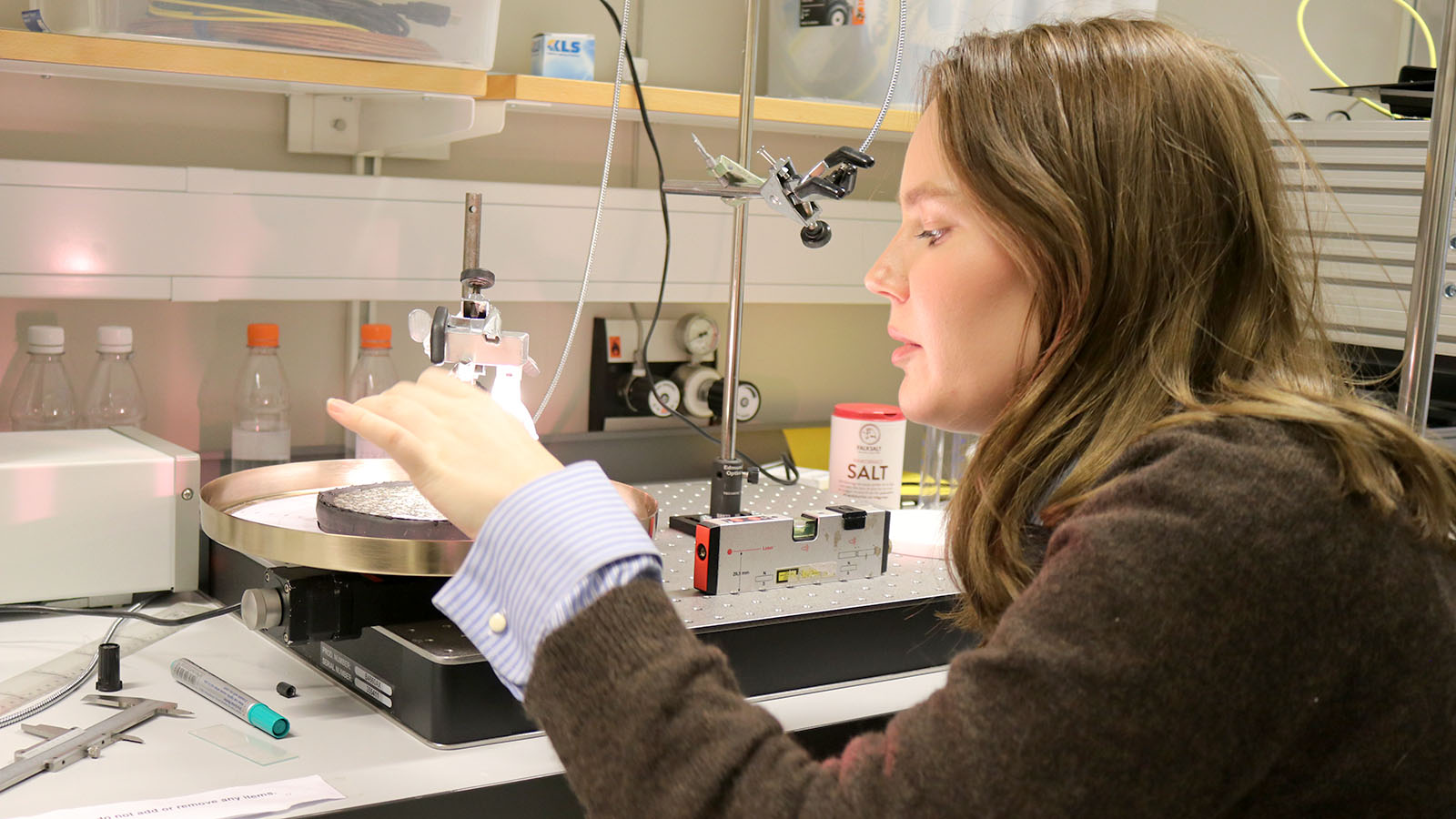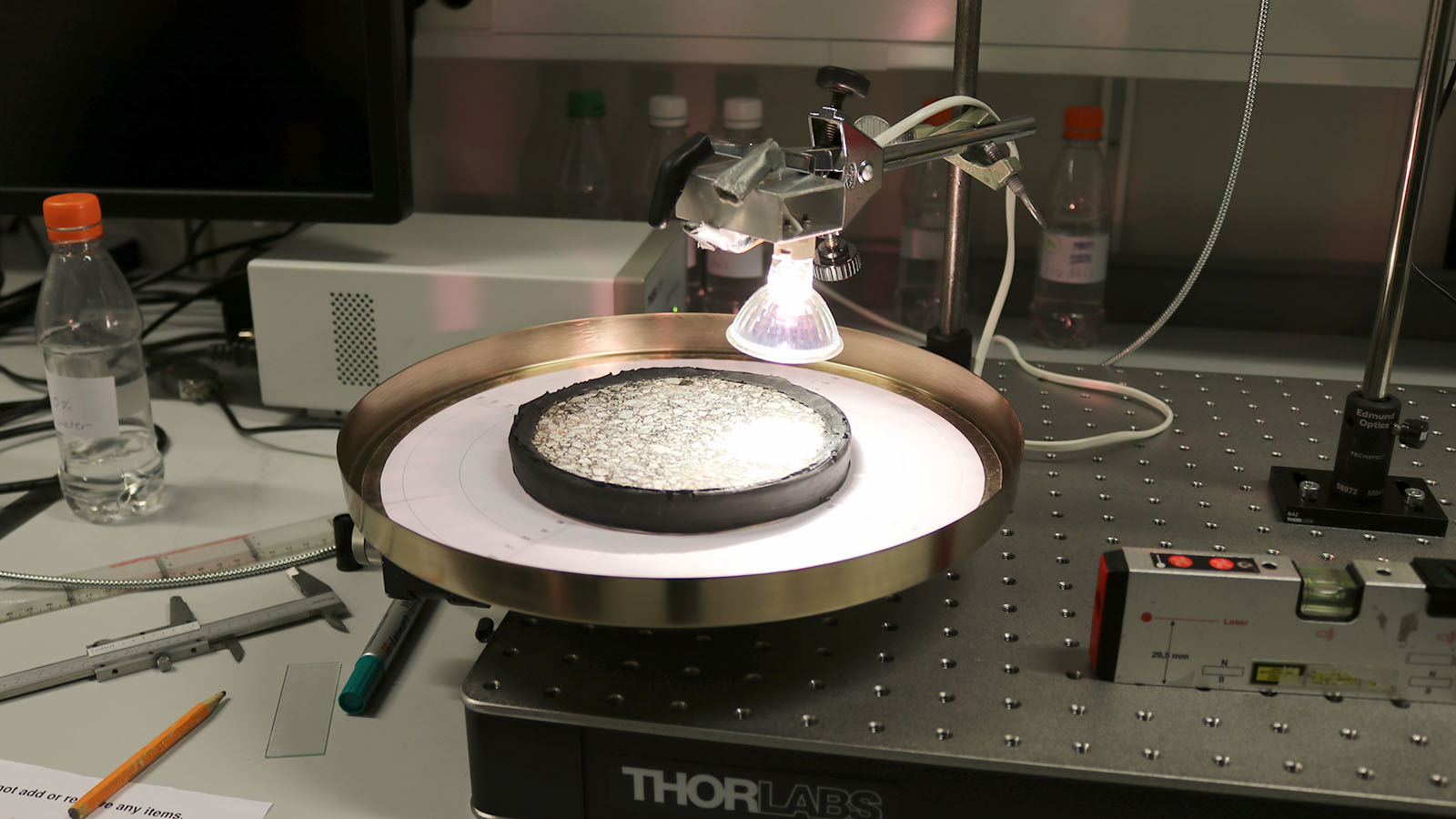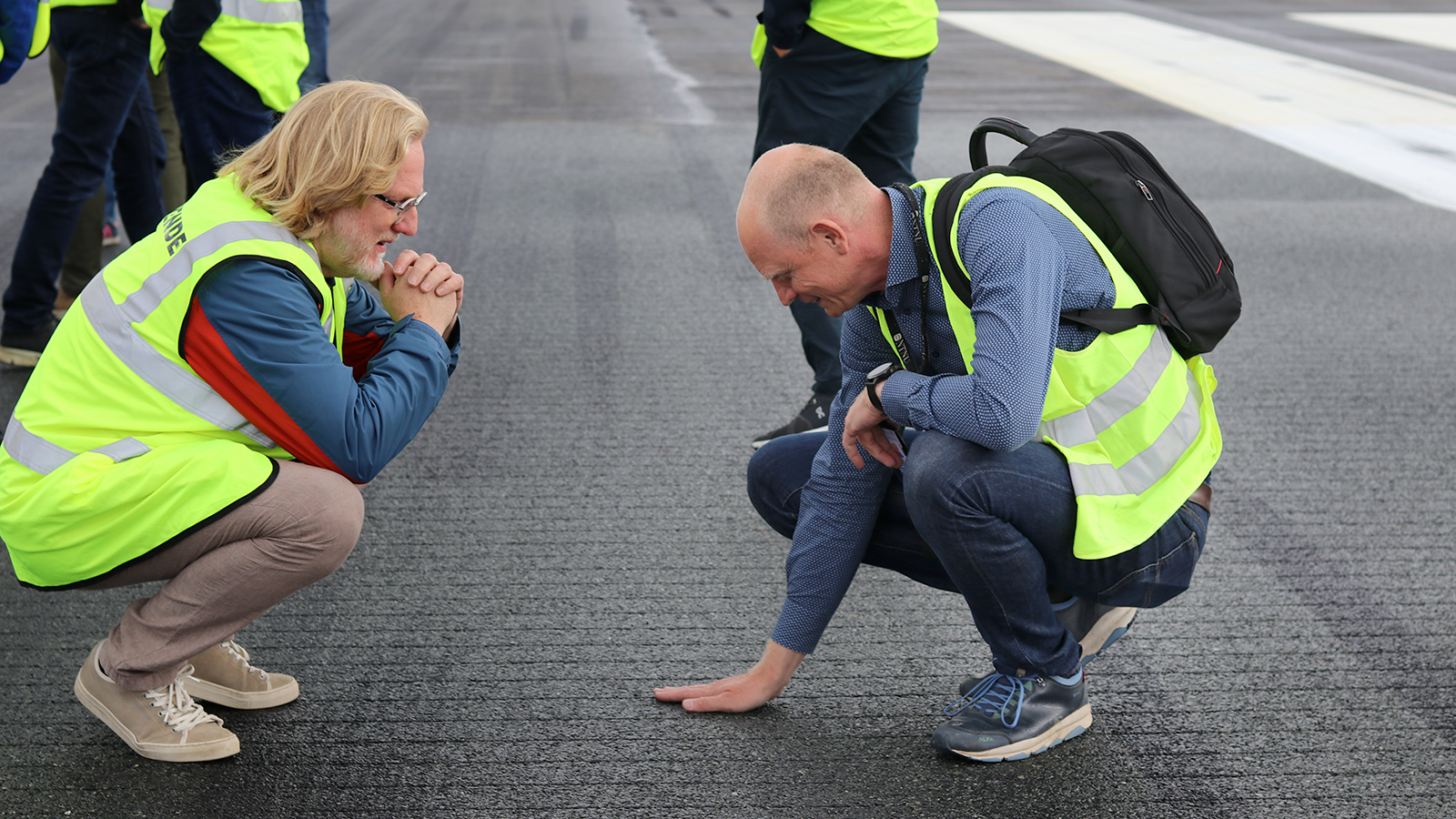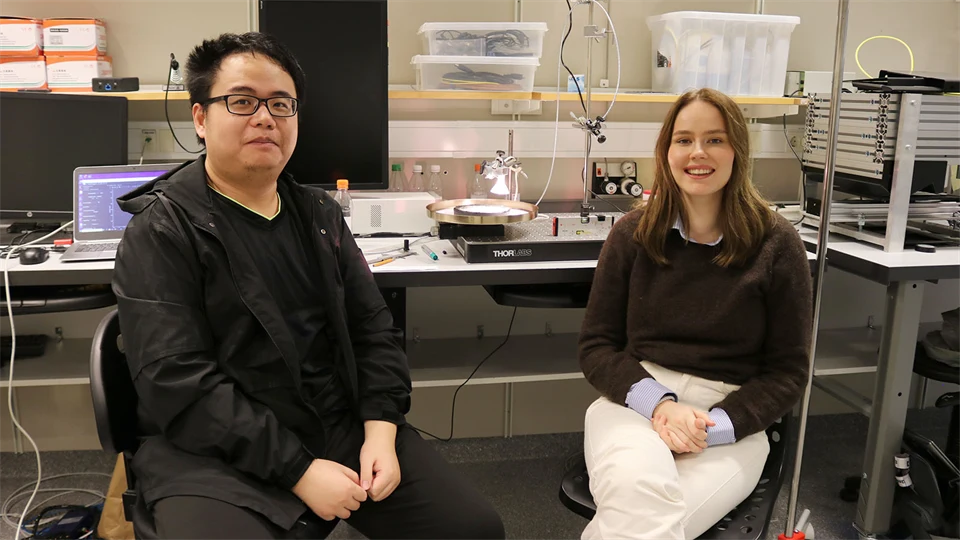Develops lab methods for measuring chemicals in water
In the beginning of December, research assistant Julia Pedersen Fresvig from NTNU, visited STC Research Center in Sundsvall. The purpose of the visit was to meet Mid Sweden University's researchers Wei Zhen and Benny Thörnberg and to discuss the new lab setup that will measure chemicals in water.
In the research project SENAVIS - Sensor technology for smart de‑icing, the researchers are developing a method that can measure chemicals in liquid. As a step on the way, research assistant Julia Pedersen Fresvig from NTNU made her first visit to Mid Sweden University in Sundsvall, to meet the researchers and see the lab setup.
- I got the opportunity to meet Prof. Benny Thörnberg and Wei Zhang in person and get a demonstration of the lab setup that will be used in the project and together we identify challenges that need to be resolved to achieve successful measuring’s, says Julia.

Julia looking at the lab setup.
The lab setup consists of a rotating disk of asphalt with liquid on, a spectrometer that measures how the liquids absorb wavelengths of IR-light. The goal is to use the setup to measure the concentration of chemicals in the liquid.
- We will use water with different levels of salt concentration on the asphalt disc, from 0-20 %. Then we use an IR- light and a spectrometer to measure the water and salt concentration, tells Wei Zhen, PhD-student within SENAVIS-project.

The asphalt on the rotating disc.
Chemicals like salt and potassium formate, are used today for de-icing of roads and runways. The chemicals are expensive and have a negative impact on the environment which creates the need to reduce use without compromising safety. One way to do this is to use the chemicals more efficiently, the right amount in the right place. To achieve this, maintenance personnel need to know more about the condition of the road surface. Something that the SENAVIS-project wants to contribute to.
- Going from a lab setup to real life measuring is very challenging. For example, the airport runway is groved to improve the drainage system and the asphalt is uneven with stones, which challenges optical measuring, says Julia.

Prof. Benny Thörnberg from Mid Sweden University and Prof. Alex Klein-Paste from NTNU on the runway.
In a next step, the research team will make test in the Winterlab at NTNU where the researchers can control the surrounding conditions like temperature and humidity.
The goal is to develop a reliable measurement method and get high-quality data. With a good data set, the long-term objective is to develop AI-models than can predict the condition of the road surface and recommend actions for de-icing.
- Our research project just started and there are several demanding research challenges to solve along the way. It is a very challenging project which includes everything from engineering, mathematics and physics and with the goal of solving real-world problems, Wei sums up.
The research project SENAVIS ‑ Sensor technology for smart de‑icing is a collaboration between NTNU - Norges teknisk-naturvitenskapelige universitet and STC Research Centre at Mid Sweden University. The project is funded with support from Interreg Sweden-Norway. Read more about SENAVIS
